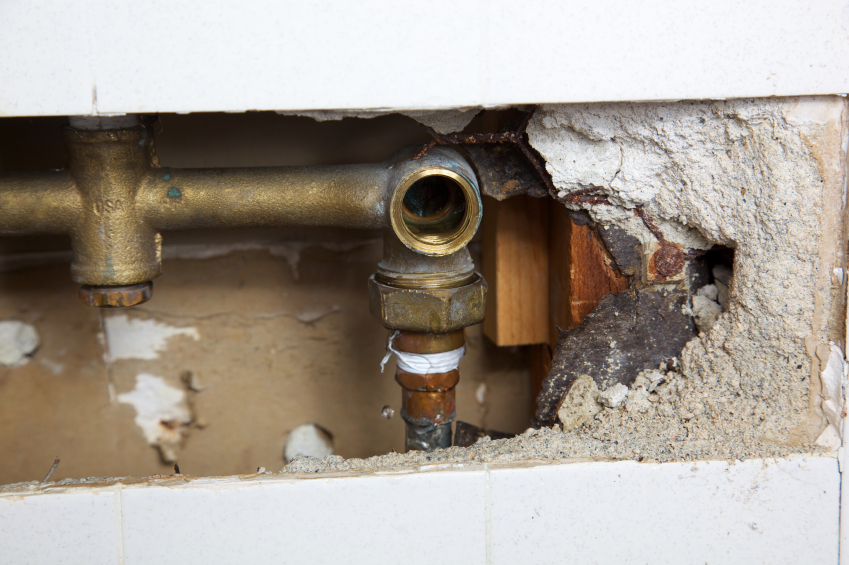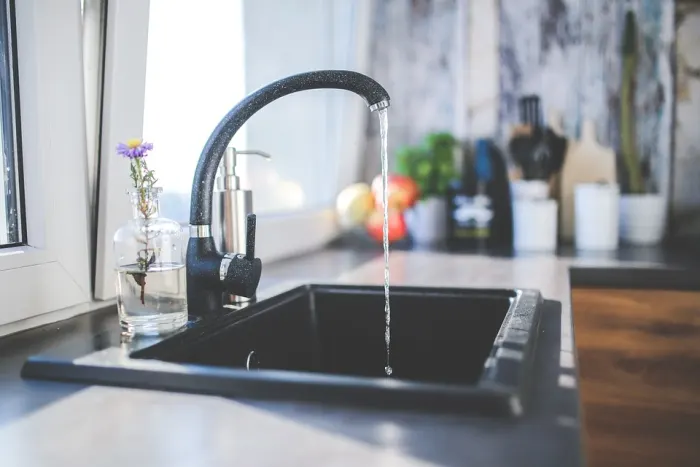Noisy Plumbing Troubles SOLVED!
Noisy Plumbing Troubles SOLVED!
Blog Article
On this page in the next paragraph you can find additional brilliant facts involving Diagnose Unwanted Plumbing Noises.

To identify noisy plumbing, it is very important to identify first whether the undesirable noises occur on the system's inlet side-in other words, when water is turned on-or on the drain side. Noises on the inlet side have actually differed causes: too much water stress, worn shutoff and also tap components, incorrectly linked pumps or other devices, incorrectly placed pipe fasteners, and also plumbing runs including too many tight bends or various other constraints. Noises on the drain side generally originate from inadequate area or, as with some inlet side noise, a layout having tight bends.
Hissing
Hissing sound that happens when a tap is opened slightly generally signals excessive water stress. Consult your neighborhood public utility if you presume this problem; it will have the ability to tell you the water pressure in your location and can install a pressurereducing shutoff on the incoming water pipe if required.
Other Inlet Side Noises
Squeaking, squealing, scraping, breaking, and tapping normally are caused by the development or tightening of pipes, generally copper ones providing warm water. The sounds occur as the pipelines slide versus loosened fasteners or strike nearby home framework. You can often identify the location of the trouble if the pipes are revealed; simply follow the noise when the pipelines are making sounds. Probably you will uncover a loose pipe wall mount or a location where pipes exist so near floor joists or various other framing pieces that they clatter versus them. Affixing foam pipe insulation around the pipes at the point of call must remedy the issue. Be sure bands and wall mounts are safe and give ample assistance. Where feasible, pipe bolts need to be attached to substantial structural aspects such as structure walls instead of to framing; doing so decreases the transmission of resonances from plumbing to surface areas that can enhance as well as move them. If connecting fasteners to framing is inevitable, cover pipelines with insulation or other resilient material where they get in touch with fasteners, as well as sandwich the ends of new fasteners in between rubber washers when installing them.
Dealing with plumbing runs that suffer from flow-restricting limited or various bends is a last resort that ought to be embarked on only after consulting an experienced plumbing service provider. Regrettably, this situation is fairly usual in older houses that might not have been developed with indoor plumbing or that have actually seen numerous remodels, specifically by amateurs.
Chattering or Shrieking
Intense chattering or shrieking that occurs when a shutoff or faucet is activated, which generally vanishes when the fitting is opened totally, signals loosened or faulty inner components. The option is to replace the shutoff or tap with a brand-new one.
Pumps and also appliances such as cleaning machines as well as dishwashing machines can move electric motor noise to pipes if they are improperly attached. Link such products to plumbing with plastic or rubber hoses-never inflexible pipe-to isolate them.
Drain Sound
On the drain side of plumbing, the principal goals are to eliminate surfaces that can be struck by dropping or hurrying water as well as to protect pipelines to consist of inevitable audios.
In new construction, bathtubs, shower stalls, commodes, and wallmounted sinks and basins must be set on or versus durable underlayments to minimize the transmission of sound with them. Water-saving bathrooms as well as taps are much less loud than standard models; mount them rather than older kinds even if codes in your location still permit utilizing older components.
Drains that do not run vertically to the cellar or that branch right into horizontal pipeline runs supported at floor joists or various other mounting existing especially frustrating sound problems. Such pipes are large enough to radiate considerable resonance; they likewise lug substantial amounts of water, which makes the situation even worse. In new construction, specify cast-iron dirt pipelines (the big pipelines that drain commodes) if you can manage them. Their massiveness contains a lot of the noise made by water travelling through them. Also, stay clear of directing drains in wall surfaces shown to bedrooms and also areas where individuals collect. Walls having drains need to be soundproofed as was defined earlier, utilizing double panels of sound-insulating fiber board and also wallboard. Pipes themselves can be wrapped with unique fiberglass insulation made for the function; such pipelines have an invulnerable plastic skin (sometimes containing lead). Results are not constantly sufficient.
Thudding
Thudding sound, often accompanied by trembling pipes, when a tap or home appliance shutoff is turned off is a problem called water hammer. The sound as well as vibration are brought on by the reverberating wave of stress in the water, which all of a sudden has no area to go. Sometimes opening a shutoff that discharges water rapidly right into an area of piping consisting of a limitation, joint, or tee installation can generate the same condition.
Water hammer can normally be healed by installing installations called air chambers or shock absorbers in the plumbing to which the trouble shutoffs or faucets are connected. These devices allow the shock wave created by the halted circulation of water to dissipate airborne they consist of, which (unlike water) is compressible.
Older plumbing systems might have brief vertical sections of capped pipe behind wall surfaces on faucet competes the exact same purpose; these can eventually full of water, lowering or damaging their efficiency. The cure is to drain the water supply totally by shutting off the primary water system shutoff as well as opening up all taps. Then open up the major supply valve and also close the faucets individually, beginning with the faucet nearest the valve as well as ending with the one farthest away.
If Your Plumbing is Making These Sounds, There’s a Problem
A Bang or Thump When You Turn Off a Faucet
If a loud bang or thump greets you each time your turn off running water, you likely have a water hammer. A water hammer occurs when the water velocity is brought to a halt, sending a shock wave through the pipe. It can be pretty jarring — even worse, damaging to your plumbing system. All that thudding could loosen connections.
Strange Toilet Noises
You’re so familiar with the sounds your toilet makes that your ears will be attuned to anything out of the ordinary. Fortunately, most unusual toilet noises can be narrowed down to just one of several problems.
Foghorn sound:
Open the toilet tank Flush the toilet When you hear the foghorn noise, lift the float to the top of the tank If you’re ambitious, you can remove the ballcock valve and disassemble it to replace the washer. Or you can more easily replace the ballcock valve entirely. This device is relatively inexpensive and available at most any hardware store.
Persistent hissing:
The hissing following a flush is the sound of the tank filling. It should stop once the tank is full. But if the hissing continues, it’s likely because water is leaking out of the tank. The rubber flap at the bottom of the tank can degrade, letting water slip through and into the bowl. That’s why the tank is refilling continuously. Fortunately, this is an easy fix:
Cut the water to the toilet by closing the shutoff valve on the water supply line. Flush the toilet to drain the tank. Disconnect the flapper Attach the new flapper Gurgling or bubbling:
Gurgling or bubbling suggests negative air pressure in the drain line, likely resulting from a clog. As air releases, it causes the water in the toilet to bubble. This could either be a minor issue or a major one, depending on the clog’s severity. Clogs can be caused by toilet paper or more stubborn obstructions such as tree roots. If you can’t work out the clog with a plunger, contact a professional plumber for assistance because a clog of this magnitude could lead to filthy and unsanitary sewage backups in your sink bathtub.

Hopefully you enjoyed our post about Why is My Home Making Strange Plumbing Noises. Thanks for spending some time to read our piece of content. Sharing is nice. Helping others is fun. We value reading our article about Diagnose Unwanted Plumbing Noises.
Contact Report this page